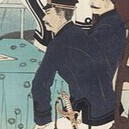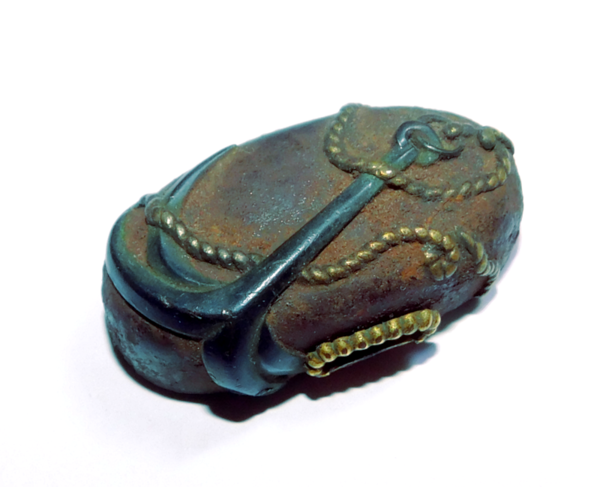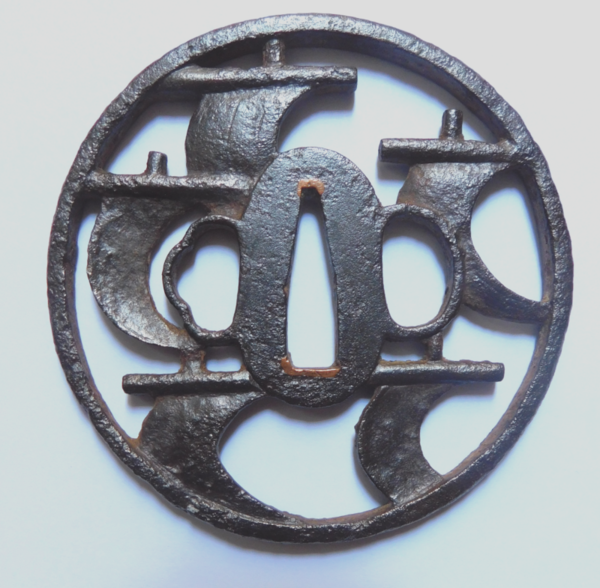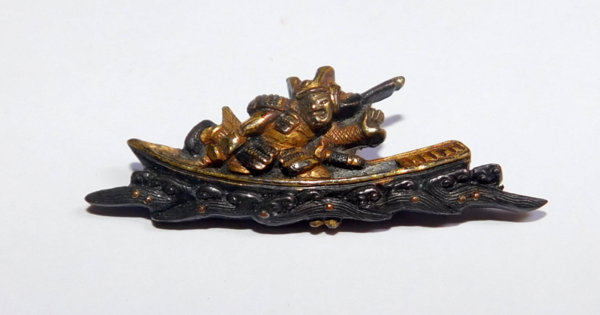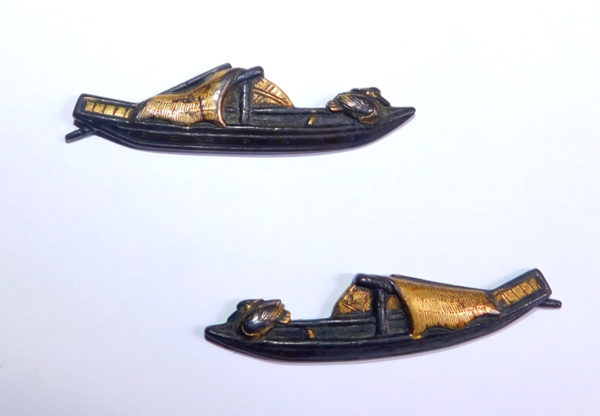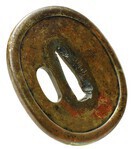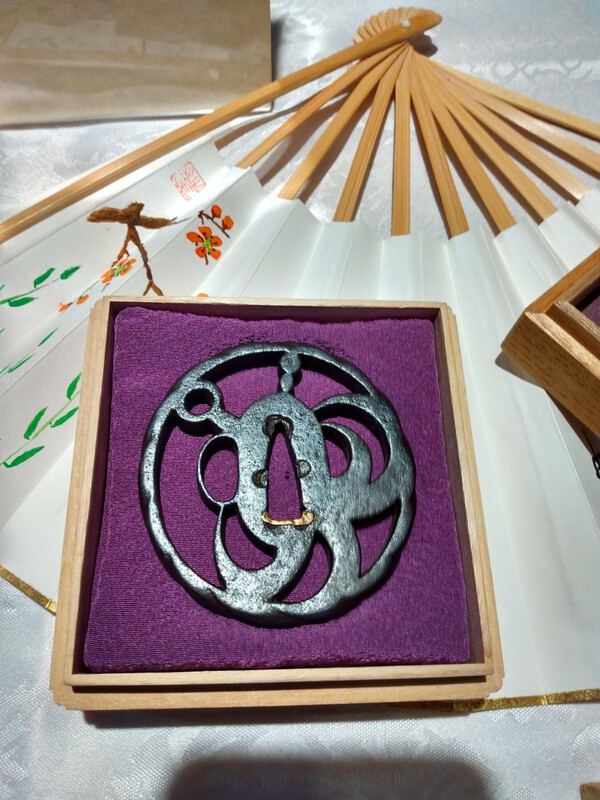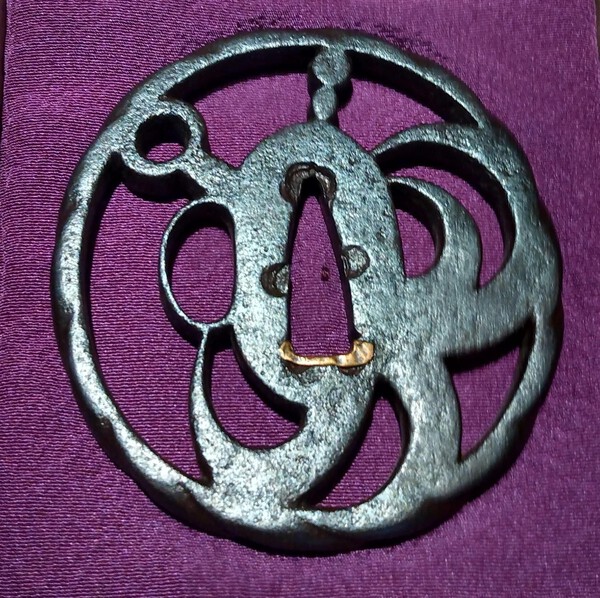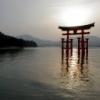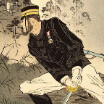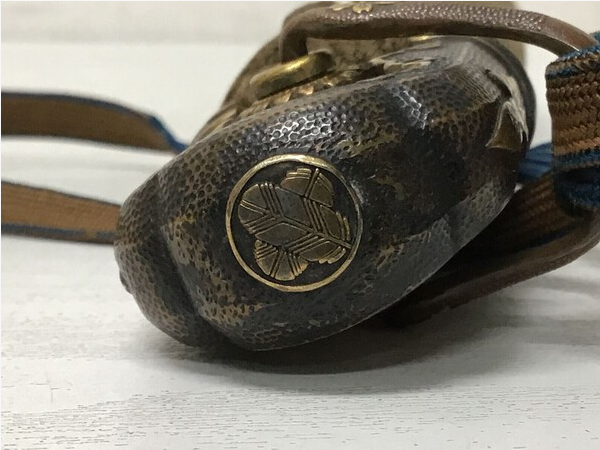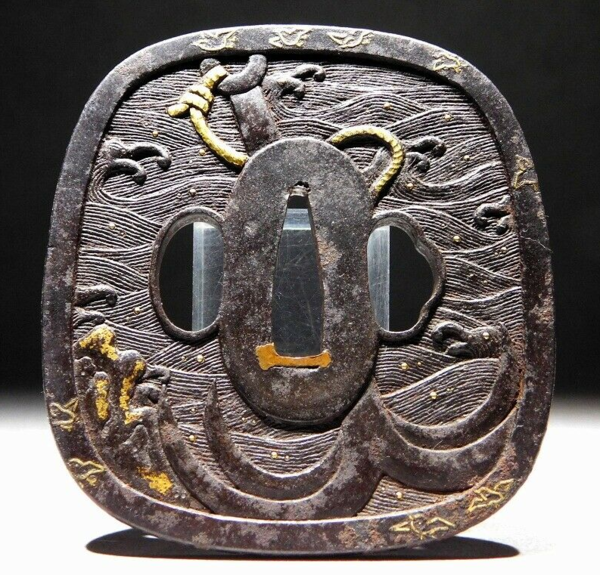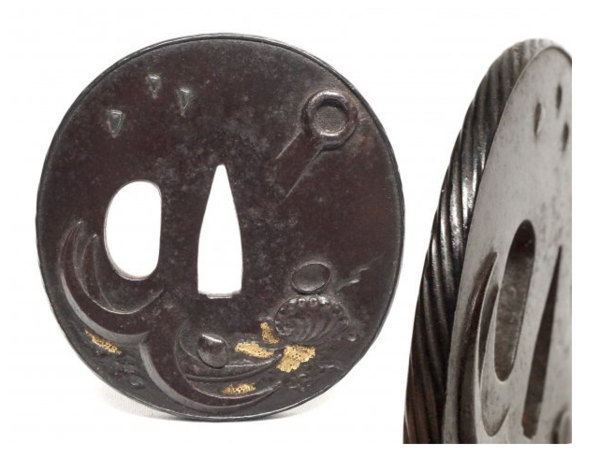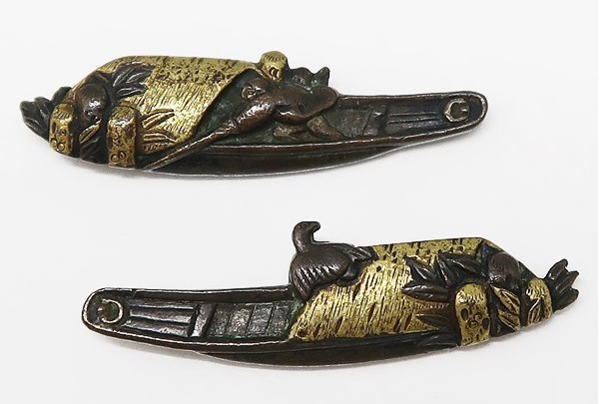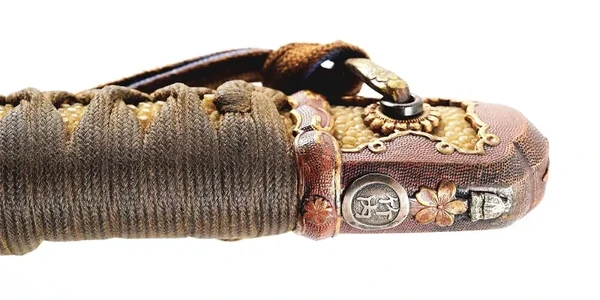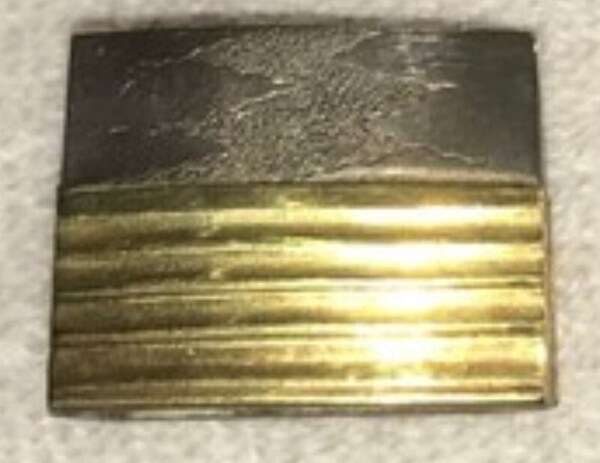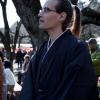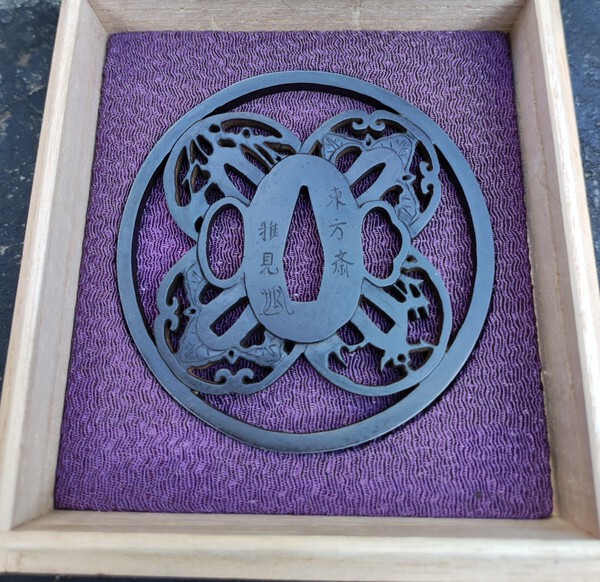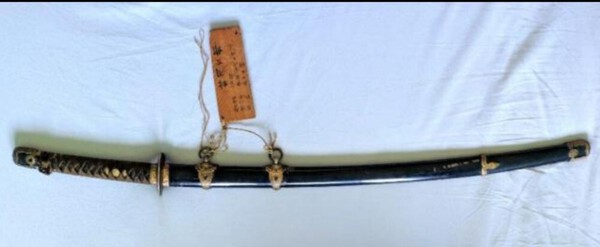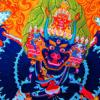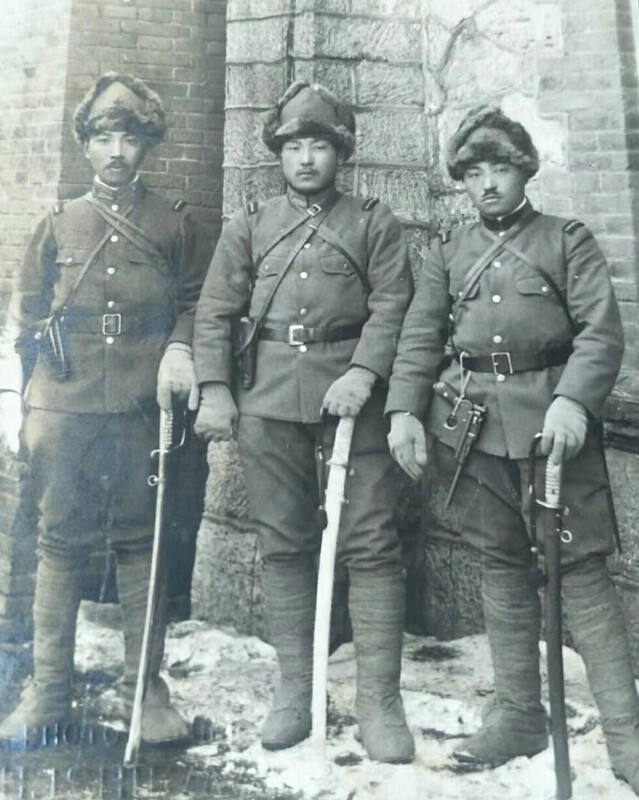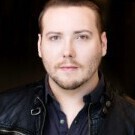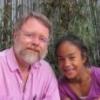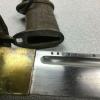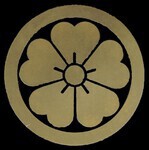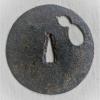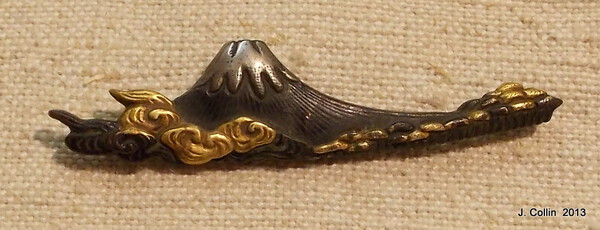Leaderboard
Popular Content
Showing content with the highest reputation on 07/14/2022 in all areas
-
Brethren, Just stumbled across this site I haven't seen before: https://www.spoon-tamago.com/2020/02/05/eliza-scidmore-photographed-everyday-life-in-Japan-over-100-years-ago/?mc_cid=77cafa5ffb&mc_eid=962267c38c There are numerous 'by-way' tags of interest there too. Bestests, BaZZa.8 points
-
Good morning, Here is an update with new maritime items. First an anchor Kashira, a bit rusty buy lovely object : Another Fushi-Kashira set with sails pattern, I really like this one : To complete this set, I recently got this tsuba with a similar pattern from Grey Doffin whom I thank again. And last, a single menuki with a Samurai in a small boat (I am searching another menuki to complete this one, I may just have found it), and a pair of menuki with cormorant fishing boats :4 points
-
4 points
-
3 points
-
thank you Brian, for your endorsement. in case my meaning was unclear due to my typing error; 'Despite apparent serious surface corrosion there is the evidence of laminar structure that would inevitably be present in hand wrought pre-industrial steel/iron.' ought to read Despite apparent serious surface corrosion where is the evidence of laminar structure that would inevitably be present in hand wrought pre-industrial steel/iron? Dan, I'd have to disagree with your suggestion that this is a rusted, not a corroded, piece of material. Corrosion in fact covers the damage caused by rust, and that's really what we're looking at here. It is perfectly correct to speak technically about a corroded steel structure and to distinguish it from a merely rusted one. Structures made from Corten steel, for example, rely on the formation of a rust coating to protect it from further rust penetration that would lead to corrosion and mechanical failure. Perhaps a simple and more familiar example might clarify; the patina we admire on ferrous tsuba are composed of rust, albeit in a fine and stable state. Once that stable rust patina is disrupted and 'goes live' it is actively rusting, and causing corrosion, ie; the degradation and breakdown of the metal's surface and eventually structure. As for the time it might take for a surface of steel or iron to exhibit the sort of texture this example shows that would depend entirely on the conditions it was kept in or subjected to. It's perfectly simple to recreate this degree of 'apparent' corrosion in a few months. Quicker if you were to use a little bit of electrical current to speed things up a bit. And for anyone who really wants to go down the rabbit hole of pre-industrial ferrous metal structure and the effects of time and corrosion etc. these four books are the most frequently thumbed on the subject in my library. There's about 1300 pages of solid material in there. regards all Ford IMG_0990.HEIC IMG_0992.HEIC3 points
-
FWIW I vote for Tomomori as the personage alluded to when we see the anchor - one version of the story is that the young Antoku was frightened by the prospect of jumping into the sea - Tomomori knowing they had lost called to him "look my lord it is quite easy", tied the anchor to himself and stepped off his boat and sank into the waves, thus he is seen as a symbol of ultimate loyalty. The print showing the character "Suruga Jiro" is Kabuki and the anchor on the shoulder is meant to make him more powerful and heroic. I like your tsuba in the original post, at first I would not have said he was "wielding" it but if you look close there does appear to be someone cowering in the other boat (at 7 o'clock) Here is my poor contribution - Tochibata school...3 points
-
Death It's not written the same, but pronounced similar. So is often avoided out of superstition.2 points
-
I didn't suggest they were interchangeable at all. Nice summation of exactly what I wrote; "Corrosion in fact covers the damage caused by rust, and that's really what we're looking at here. It is perfectly correct to speak technically about a corroded steel structure and to distinguish it from a merely rusted one." On zinc and lead it'll be white. Silver is reduced to a black silver sulphide, as described below. The corrosion products that occur on iron and steels appears in a range of reddish, brown to black colours and is known as rust. Some of the blue and green corrosion products you refer to do contain some oxygen but those particular compounds are generally more complex than simple copper tin zinc lead alloys and oxygen. Copper chloride is a turquoise colour CuCl2, no oxidation involved. Copper Nitrate is a good royal blue, if it was only oxygen doing the work the result would be either black or brick red but the nitrogen changes things. Cu(NO3)2 Not all corrosion is in fact a result of oxidisation, as described above. Take silver as an example pertinent to tosogu, it's a silver sulphide Ag2S that forms on the surface and gradually consumes it. I ought to add that the broader topic of corrosion covers much more than only metals and involves many more complex process other than merely oxidisation. The scientific literature on rust lists (at least); 12 varieties of Iron oxides and hydroxides 3 varieties of iron carbonates 9 types of Iron chloride 12 Iron sulphates 4 Iron phosphates and 10 Iron carboxylates and cyanides. These all have their own particular colours and microscopic structures. The colours range from yellows, ochre, green, a wide range of browns through to red, greys and black. I believe it's the interplay of various specific 'rusts' like these, in a patina, that results in the characteristic colour and tone of certain Tanko school's tsuba. What has been especially interesting to me is that traditional tsuba patina recipes and those I've developed from the original sources reflect very well almost all of those varied and complex compounds we generally lump under the generic term 'rust'. Rust is so so much more than Iron oxides. Stable iron patina are invariably complex and multi layered compound structures produced by complex and sophisticated process that were developed over many generations through trial and error. If it just looks like crusty red iron oxide the patina is long gone. Well that'll teach me to throw in my tuppence worth... but as chance would have it I was in fact writing on exactly this topic of corrosion and ferrous patina last evening.2 points
-
2 points
-
2 points
-
Dan, When you get an opinion from someone as highly regarded as Ford, as perhaps one of the West's foremost authorities on Japanese metalwork, his opinion bears some careful thought, to put it diplomatically.2 points
-
2 points
-
I think you can translate “宍道” as “Shinji”…. Regarding the date, the carver simply avoided to chisel “四” because of its meaning. I’ve seen this several times.2 points
-
In my early years, I would immediately called the Type 98 a fake, with the poor quality kabutogane, and ito wrapped all in one direction, and poor quality nakago. I've seen enough variation since then, and lengthy debates over island-made gunto, that I'm going to firmly say - I don't know! Could certainly use more clear closeups of tsuba, fuchi, and kabutogane for a better opinion. You haven't shown enough of the Rinji details to begin a guess.2 points
-
I went back through this whole thread to see if I'd posted one like this, and in the process, have been re-amazed at the beauty, hard work, and skill that goes into so many of these habaki. WOW! But, on to the latest. Found HERE, posted by @kealpe. I've seen that semi-wavy pattern once or twice, but cannot figure out what it represents. A river maybe?2 points
-
2 points
-
2 points
-
The one in the Kuniyasu print with the anchor on his shoulder is Taira no Tomomori (see George's post), also known as Shinchūnagon Tomomori, also known as Ikari Tomomori. "Ikari" means anchor. At Dan No Ura, after losing to the Minamoto, it is said that he walked into the sea holding an anchor. Wikipedia says he tied an anchor around his feet. Anyway, it was an honorable death, as they say. https://en.wikipedia.org/wiki/Taira_no_Tomomori But Suruga Jirō Kiyoshige is also a possibility for the motif on the tsuba in Alban's original post. The ukiyoe print in Dale's post #4 is from the set of 100 Famous Warriors. Suruga Jirō was a retainer/guard for Minamoto Yoshitsune, and enters the 100 Famous Warriors list due to his exploits in protecting Yoshitsune. https://www.Japanese-wiki-corpus.org/person/Jiro SURUGA.html I don't follow why he's holding an anchor in the print. It was no doubt more obvious to people in the 19th century. photo is of the Taira no Tomomori statue in the city of Shimonoseki (near Dan No Ura).2 points
-
Dear Alban, instead of kendo gear, I believe your tsuba shows a samurai. What you are seeing as a "men" or kendo helmet is actually the sode (shoulder armor). I think that your tsuba shows Kanemitsu or Tomomori.2 points
-
Dear colleagues, today I want to show you one of the latest pieces that I have added to my collection, with a curious story. It is the work "tsuba no naka no tsuba" performed by the tsubakō Ōkawa Chikō, 18th generation of the Būshū Edo Itō school under the name of Itō Masanori, and which also has the gō of Masami Tōhōsai. In November 2019, we invited Mr. Ōkawa to Spain for tsuba exhibitions, lectures and gin zōgan and nanako tagane demonstration workshops, in one of the few such visits to Europe and the first time in Spain. During this trip, I took Mr. Ōkawa to the Prado Museum, and there, looking at the painting "Las Hilanderas" by Velázquez, we talked about the concept of the work within the work (as Velázquez depicted in this painting the paint "Europe's kidnapped" by Rubens) In this sense, I told Mr. Ōkawa that I had seen tsuba with many decorations, including nakago decorating, and nihontō-shaped menuki, as well nihontō in suemon zōgan in tsuba and fuchi-kashira, but I had never seen a tsuba inside a tsuba, and I told him that it would be a piece very interesting for me as an art historian. So, he accepted the commission, and after the years of the pandemic, I have been able to travel to Japan and collect this wonder in his own atelier. It is a tetsu tsuba where he has applied sukashi to recreate not one, but two tsuba within the same tsuba. The recreated tsubas add up to four because they represent the omote and ura sides. The tsuba chosen to represent belong to the first generations of the Akasaka school, the other being from the Owari tradition, although with a design also seen in Kyō-sukashi. I hope you like this piece as much as I do, and, of course, if you know of another tsuba that has a tsuba inside it, it would be very interesting to see it. Best regards, Marcos.1 point
-
Good morning, Here is for sale in France a late war (1944) Kai Gunto from Yoshishige (良重) : https://www.naturabuy.fr/KAi-Gunto-signe-YOSHISHIGE-item-9339101.html Same swordsmith we discuted here from a sword I just bought : No Seki stamps on this sword, should be a good quality Showato but still probably a non traditionnal blade. Seems to be in good condition, seller is asking 1600€ (same in dollars) for auction. May be paid in 4x as possible on this website. Let me know if anyone interested, I may ask for more information or photos. With what is said to be an original bill for this sword, or it is a bring-back paper from its original owner ?1 point
-
I've been bothered by this muddying of the waters regarding corrosion and rusting. The actual physical and chemical process whereby iron and steels is converted into any of the corrosion products I listed as 'rusts' in my previous post is called, by real metallurgical scientists, the corrosion process. We can have our own, tsuba/tosogu specific understandings of patina etc. and personally I need to make that distinction sometimes because that's a big part of my own particular work. But : The action on the metal is 'the corrosion process' and the result of this process is 'the corrosion product' or rust. Sometimes this rust can be made into a stable and attractive finish we enjoy as patina.1 point
-
This is a beautiful one Piers ! I saw this pattern several times, would be nice to find one someday1 point
-
You're right, I didn't see it at first but it looks like there could be even 2 people in the other boat, missing inlays for hands and figures like the main character1 point
-
He is quite well regarded and from an excellent group of smiths.1 point
-
1 point
-
Oh wow. I never really thought about that. Most Gunto I see are from the 1940s, so I've rarely seen ones from Showa 14. Might be why I've never seen this before.1 point
-
Hey BaZZa thanks for your input! Yeah I'm pretty happy with it in either case. Like I said earlier this would be the first in my collection so I think I'm going to snag it. Maybe it's a little high at $1400 but seeing comparable Gunto at that price I feel like this is a good deal for the quality. Thanks everyone for your help in narrowing this down. It's either one of two smith's signing Shige in this way. They wouldn't be more than one generation apart in either case and at the very least it's Gendaito. Hopefully now I can snag some more books and learn more about Nihonto in general because I would really love to own something pre Tokugawa.1 point
-
For what it's worth this is what I see... Despite apparent serious surface corrosion there is the evidence of laminar structure that would inevitably be present in hand wrought pre-industrial steel/iron. This sugests that the tsuba is made from an homogeneous plate of material, my intuition suggests mild steel. The second point, already implied by my first observation, it that the very evident pock-marked corrosion surface is absent from the inner walls of the sukashi. We also see still crisp edges around the seppa-dai and, for me, unconvincing tapering out of the texture in to the seppa-dai itself. The kozuka atari is a bit too curved too to be a reasonable fit alongside a kozuka back suggesting a lack of awareness of its realy practical function and meaning. My feeling is that this is a modern-ish hobby piece worked up to look older than it really is.1 point
-
I'll try to get some more pictures of the Rinji. It's just weird, but it doesn't look new or recent, however they have been making fakes for quite some time. The type 98 has writing on both sides of the Scabbard cover. I've thought possibly it was some type of post war souvenir. I know leather can be aged, but it definitely looks to be decades old. I gave the Sa-Me the heat test, and it's real ray skin.1 point
-
Well I was having bit boring time in a fever, and I won an auction in Japan for a book about swords of the collection of Kurokawa Institute, as they have some amazing items. So an idea came to me that what if I look on some of the most impressive museum collections in Japan and gather that info in a thread. As I have already collected this data actually scooping it together was pretty fast and fun. Here are some absolute top museum collections in Japan, in no particular order. I will mostly list the number of Kokuhō (National Treasure) Jūyō Bunkazai (Important Cultural Property) and Jūyō Bijutsuhin (Important Art Object) swords in the collection. Many of these museums feature amazing items that do not have official designations, and also many have multiple NBTHK designated items. Tōkyō National Museum - https://www.tnm.jp/ Of course it does not need introductions, collection features 19 Kokuhō, 56 JūBu and 6 JūBi. Kyōto National Museum - https://www.kyohaku.go.jp/eng/index.html Similar to above not too much info needed, collection features 3 Kokuhō, 25 JūBu and 2 JūBi. NBTHK - https://www.touken.or.jp/museum/about/collection.html The Japanese Sword Museum houses an amazing collection of items. NBTHK is well known for their appraisal papers. The museum collection includes 3 Kokuhō, 13 JūBu and 13 JūBi, and also several Tokubetsu Jūyō swords. Tokugawa Art Museum - https://www.tokugawa-art-museum.jp/en/about/treasures/sword/ Museum houses over 10,000 artifacts that have been collected by Owari Tokugawa Family. Collection includes 7 Kokuhō, 19 JūBu and 21 JūBi. Sano Art Museum - https://www.sanobi.or.jp/bijutsukan/collection/japanese_sword.html Established by Sano Ryūichi in 1966. I think many know their famous exhibitions and amazing books published on them. Collection includes 2 Kokuhō, 8 JūBu and 36 JūBi also several Tokubetsu Jūyō in collection. Seikado Bunko Art Museum - http://www.seikado.or.jp/en/ Seikado Bunko Library and Art Museum houses Iwasaki family (founder of Mitsubishi group) collection, founder started collecting in 1892. There are 1 Kokuhō, 8 JūBu and 23 JūBi swords in the collection. Eisei Bunko Museum - https://www.eiseibunko.com/index.html Houses the collection of Hosokawa family, public museum was opened in 1973. Collection features 4 Kokuhō, 1 JūBu and 1 JūBi. Kurokawa Insitute of Ancient Cultures - http://www.kurokawa-institute.or.jp/ Research institute established by Kurokawa Family. Collection features 2 Kokuhō, 9 JūBu and 30 JūBi swords. Tōken World - https://www.touken-world.jp/ This newly established museum in Nagoya has acquired stunning collection of items in fairly short time span. Museum was opened in 2020. The collection has 1 Kokuhō, 10 JūBu, 41 JūBi and 58 Tokubetsu Jūyō swords. Japan Sword Museum Technology Research Foundation - http://www.nihontou.or.jp/collection.html This foundation was established in 2015. The collection includes 2 Kokuhō, 20 JūBu, 11 JūBi and 11 Tokubetsu Jūyō swords. Of course there are lots of other amazing museums in Japan that feature excellent swords and related items. And I did not include any shrines and temples in this list (some of them have spectacular items), as I might do a followup list on some of those. The current location of Kokuhō and Jūyō Bunkazai items can be tracked in here: https://kunishitei.bunka.go.jp/bsys/index as I believe their ownership is required to be informed. For Bijutsuhin items tracking down them is lot more trickier but for them I used the historical info that was on the 80's book series that featured every Bijutsuhin sword, as well as more modern info acquired from several Japanese books and magazines. Of course for the bottom 2 new collections it was easy as they list the items they have. They have acquired lot of Bijutsuhin from previously owned privately and other museums. I would also think that after some older owners have passed away some Jūyō Bijutsuhin swords (and Tokujū etc.) would have been donated to Tokyo & Kyoto National Museums, as well as NBTHK and other museums as well. I hope this might be interesting to at least some people. :D1 point
-
Mino was landlocked, but by marrying his beautiful and intelligent daughter to Oda Nobunaga in Owari to the south, his lands extended to the sea at last.1 point
-
1 point
-
Hello All, First, thank you so much to all those who keep/maintain this forum. I just discovered it, and am absolutely thrilled. I am originally from Reno Nevada, but now live in West Lafayette Indiana. My first exposure to nihonto was in 2003 on a trip to Japan. A friend of mine and I stumbled upon a dealer's shop in Okayama City. I couldn't believe my eyes. I had no idea owning such things was possible. The dealer (I believe his name is Ando-san) was so gracious to let me gawk at his wares. Of the roughly $1000 I brought for a really cool gift all was spent at that shop. I purchased three tsubas (which I will upload to another forum topic to see what thoughts are thunk about them). I saw that him at the San Francisco show the next year, and he was so very kind (we had lunch together). He also gave me contact information of a collector who lived in the Reno area (whose name I have lost). I was lucky enough to get ahold of this person who spent about an hour on the phone with me. One piece of advice he gave me was to NOT start collecting at that point in my life. I was an undergraduate student at university, and so had little/no cash. I never stopped thinking about nihonto. All these years later (having graduated with a doctorate degree and with a job) I am in a position to begin a serious collection. As it stands, one could fill several giant warehouses with what I do not know about nihonto. I find the level of precision and technical knowledge of the members here to be absolutely impressive and I aspire to know a fraction of what some of you know. As it stands, I spend at least one month a year in Japan (my wife is Japanese - family is from Odawara), and am planning on purchasing a high quality sword next trip (December 2022). So, I may chew on some ears so as to sharpen my scouting skills.1 point
-
yes the kirikomi is not really a fault, the boshi is very well hidden, I think I can see it sometimes but other times not at all i showed it to a polisher here in the uk and they thought it was most likely lost and would need a window made to check. I love the sword though and will be sending it to Japan for polish and shinsa no matter what. The results; who knows, but it's worthy of restoration and one I wont be parting with so I don't care about value.1 point
-
Good morning, Very nice sword. I have often seen wakizashi or relatively short katana blades on navy mounts. To compare to army swords, I did a little survey on the lengths observed on more than 300 army and navy blades. Either ancestral blades or war productions, Kai Gunto most often have blades around 24/25'', often shorter, whereas army swords lenghts are more distributed, usually longer, around 26'' and up to 28'' (with all 26.25/26.50'' industrial blades for NCO swords). (Number of swords / blade length) Interesting finding. Trying to explain this notable difference, as sailors were certainly not to be smaller than their army counterparts, it was undoubtedly rather to facilitate movement onboard ships, and naval swords had certainly less chance of being used in combat. Was there any regulation precising and explaining blade lenghts for both Army and Navy ?1 point
-
1 point
-
1 point
-
1 point
-
I wish all swords had a Mon, they are just so interesting and add a personal touch to the swords.1 point
-
I'm pretty sure the first one is signed, 宮城 守國 (Miyagi Morikuni). Pretty sure he's an RJT smith who made gendaito only. Second blade I can't see well enough to make out characters1 point
-
I’m usually not much of a show-and-tell guy, but being more or less confined to my apartment recently, my mounting boredom finally drove me to make an exception. Or, more candidly: facing the choice over the Easter weekend between filing my tax return, another day of binge-watching, starting drinking at 9:30 AM, and writing something up for the NMB, my liver and brain convinced me to opt for the latter . When I started collecting Japanese swords more than forty years ago, I set my sights on a daishō as the ultimate goal – after all, it’s often considered the epitome of samurai culture. But progressing in my studies, and losing quite a few romantic notions along the way, I realized that it wasn’t really that important to me anymore. My collecting focus had shifted to Sō-den kotō, and there are simply no “true” daishō from that period: some are from the shintō period, but the vast majority is from the shinshintō period – and all of them are hard to find anyhow, being few and far between. I don’t want to go too much into what constitutes a true daishō, Darcy Brockbank already explained that in one of his excellent blog entries: https://blog.yuhindo.com/daisho/; he calls it jokingly “the holy grail for sword collectors”, but considering its rarity, this isn’t too far from the truth. To summarize: the swords have to be obviously made as a pair in regard to the deki, carry the same date, have consecutive tōrokushō numbers, and both blades are on one kanteisho. Other than swords and tsuba, I also collect and research koshirae, and over the years was able to add five daishō-koshirae to my collection; however, acquiring the blades themselves seemed to remain as elusive as ever. During my decades of collecting, I only saw a very few daishō up for sale, and those that were of a quality that I found desirable, were expectedly way beyond of what I was able or willing to pay. Well, while going on a road trip to the North of Honshū with Robert Hughes about 1 ½ years ago, he told me that he had bought a daishō at a dealers auction the day before – which immediately piqued my curiosity. About a week later, I was able to inspect the swords, and really took to them. However, the katana came in a very old shirasaya (saya only), and the wakizashi in a koshirae that had the ito cut off, and was stripped of tsuba, kōgai, kozuka, and menuki. Both blades needed a polish, as well as new shirasaya and habaki, but already had tokuho papers. And there it was, my new project to bring back this daishō to its former glory, kind of making an old, almost forgotten dream come true . Bob even took the legwork out of getting the swords to the involved craftsmen for me, so I concentrated on having the wakizashi-koshirae restored. (Btw, the polishing was done by Ikeda Nagamasa.)1 point
-
Nothing ever is in this field. Suriage Bottomley1 point
-
Something niggling in my mind prompted me to return to this thread and I was struck by the fact that the helmet illustrated on the now sadly defunct 'Samurai Armour Forum' also had a reinforcing plate riveted to the top of the front plate just in front of the tehen to stop the top of the plate springing upwards. Perhaps this was necessitated because the bowl was assembled with only four rows of rivets rather than five. I also decided to consult this smith in Robert Burawoy's work 'Etude du Meikan Zukan' where it states that in the Myochin genealogy Munehisa is described as being a pupil of Yoshimichi yet differs from Yoshimichi's work in signing on the front plate and using only four rows of rivets. He never seems to have used the name Myochin and it states he worked in Shimotsuke. In the Zukan is shown a helmet with this signature dated to Tenbun 5 (1536) and the suggestion that he was contemporary with Myochin Nobuie but was probably not a Myochin smith nor a pupil Yoshimichi but in all probability was an independent armourer. Ian Bottomley1 point
-
1 point
This leaderboard is set to Johannesburg/GMT+02:00

